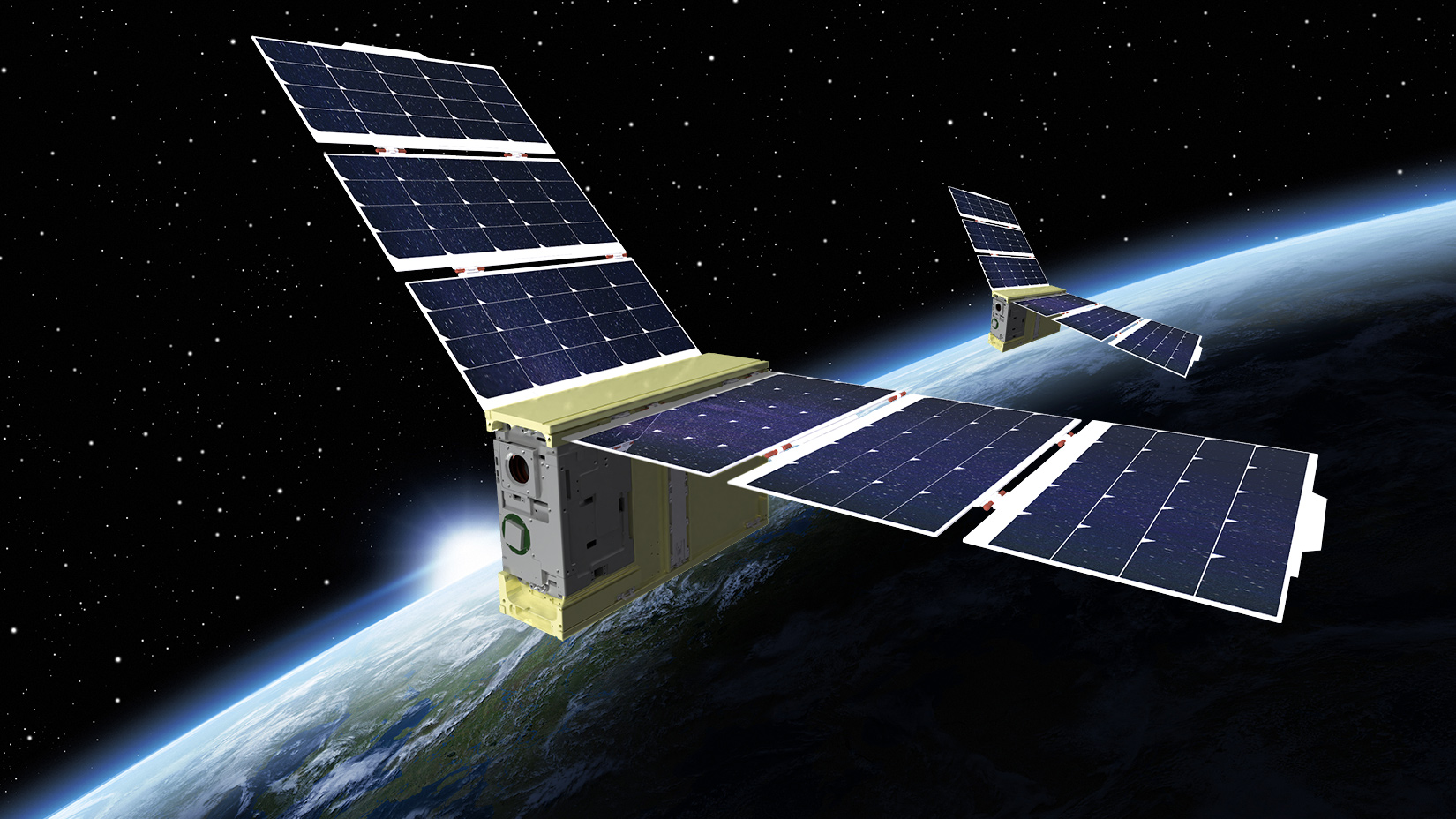
The Army’s Gunsmoke-L (Lonestar) experimental CubeSats are designed to warn commanders of GPS interference. (Illustration: Dynetics)
WASHINGTON — After beginning on-orbit operations in July, the Army is in the midst of evaluating the results of experimental satellite tech designed to directly warn soldiers on the ground when GPS signals have been disrupted or compromised.
The Army Space and Missile Defense Command (SMDC) has launched one of two Gunsmoke-L CubeSats in order to test the Lonestar sensor design, from which the “L” designation is derived. And while there is a ways to go in evaluating the sensor’s performance, SMDC is already pondering who — whether the National Reconnaissance Office, the Space Force and/or commercial partners — might agree to host Lonestar payloads should the system prove ready to take on real-world operations.
“If the payload develops into an operational capability, it would give situational awareness information directly to the tactical warfighter on the ground from space. As a payload, Lonestar could fit a wide variety of buses as a potential multi-mission satellite. SMDC is exploring options for a potential transition,” SMDC spokesperson Lira Frye told Breaking Defense.
“To clarify, the [current] satellite and payload are an experiment, so it is not an operational satellite for the Army, but rather an opportunity to evaluate the utility of a capability by tactical users,” she added. “The bus immediately performed as expected. We are now characterizing and analyzing the payload performance.”
While the specifics are classified, Gunsmoke-L is one of a set of three experimental CubeSat initiatives designed to help Army field units get more rapid direct support from space.
The second, called Polaris, also is aimed at ensuring positioning, navigation and timing (PNT) in case of trouble at the GPS corral, but is aimed squarely at serving in the deputy sheriff role by providing an alternative if GPS goes down.
The third initiative is the Gunsmoke-J CubeSat series, designed to scout over-the-horizon payloads to feed the Army’s “long-range precision fires” capabilities, including hypersonic missile launchers — a foundational requirement for Project Convergence, the service’s effort to develop Joint All Domain Command and Control (JADC2) capabilities.
One of the Gunsmoke-L demo sats, launched July 1 to Low Earth Orbit (operating at an altitude of about 495 kilometers) on Virgin Orbit’s “Straight Up” mission carrying its tiny 6U Lonestar payload, roughly the size of a man’s shirt box. Dynetics, a subsidiary of Leidos, was awarded $8.3 million to develop two of the payloads, and a spokesperson explained today that a second CubeSat will be launched at an unspecified future date.
While Lonestar’s capability will not be wrangled into in Project Convergence, Frye said “there are other Army and joint exercises we plan to participate in throughout the year.”
Along with results of the planned Army exercises, Dynetics will be providing SMDC all the technical data and analytics provided by Lonestar throughout the year-long project to help the service figure out requirements for any potential follow-on hosted payload version.
The Army over the past few years consistently has argued that it has no intentions of building its own satellites, rather is considering hosting its own payloads — controlled by soldiers directly — on other satellites. Potential partners include the National Reconnaissance Office, the Space Force and/or commercial firms.
In particular, the Space Development Agency (currently under the Office of the Secretary of Defense but soon to be realigned underneath the Space Force) could be a candidate for hosting Army payloads. SDA already has an agreement with the Army to use the TITAN mobile ground system to provide command and control for SDA’s Transport Layer to allow it to serve as the JADC2 communications backbone.






















